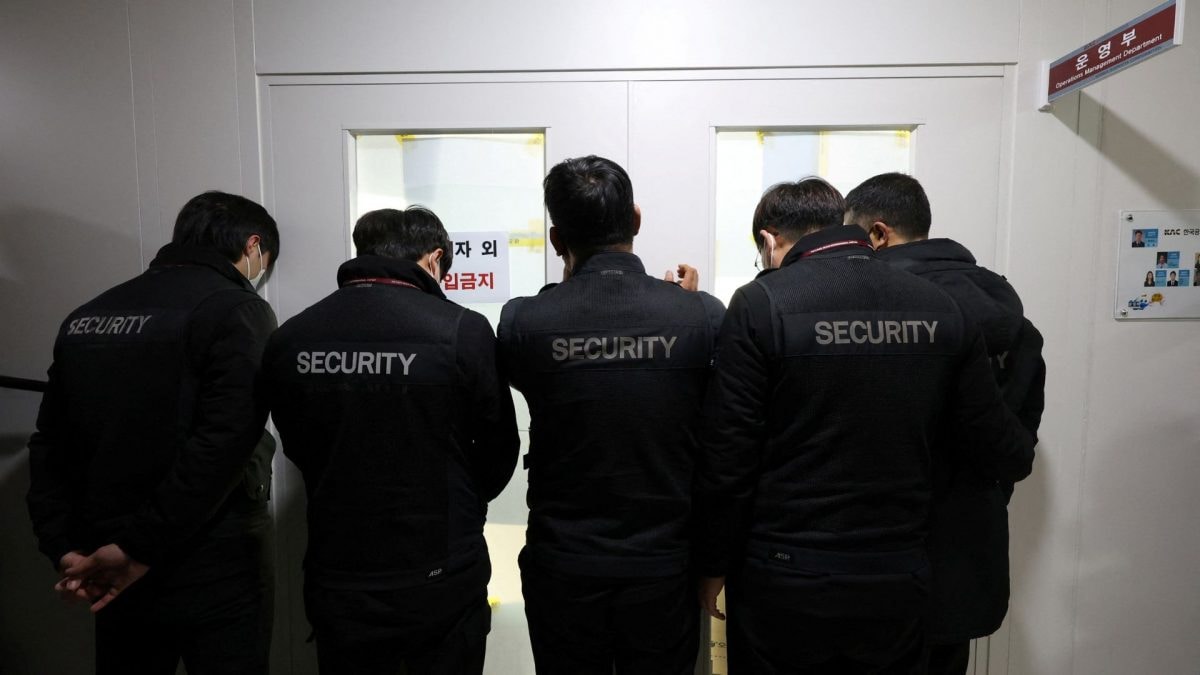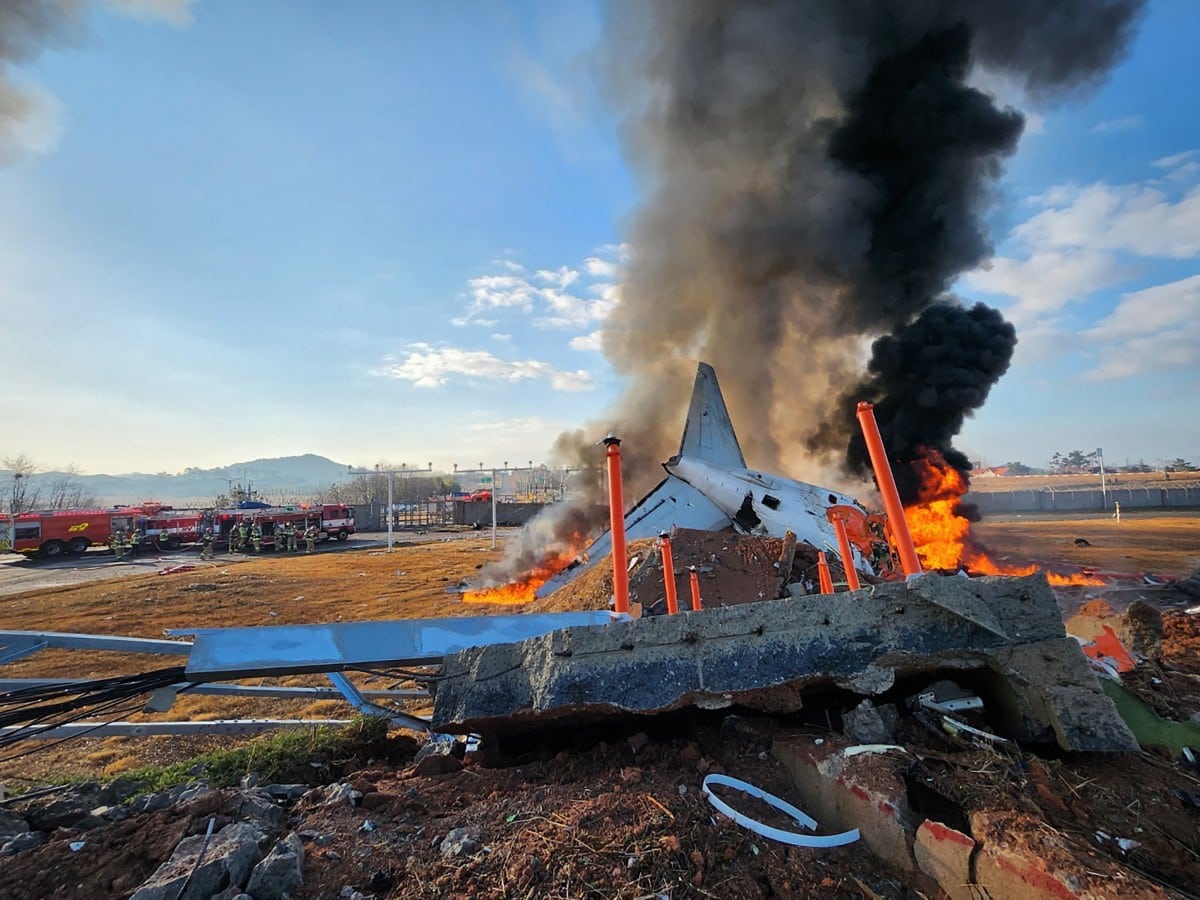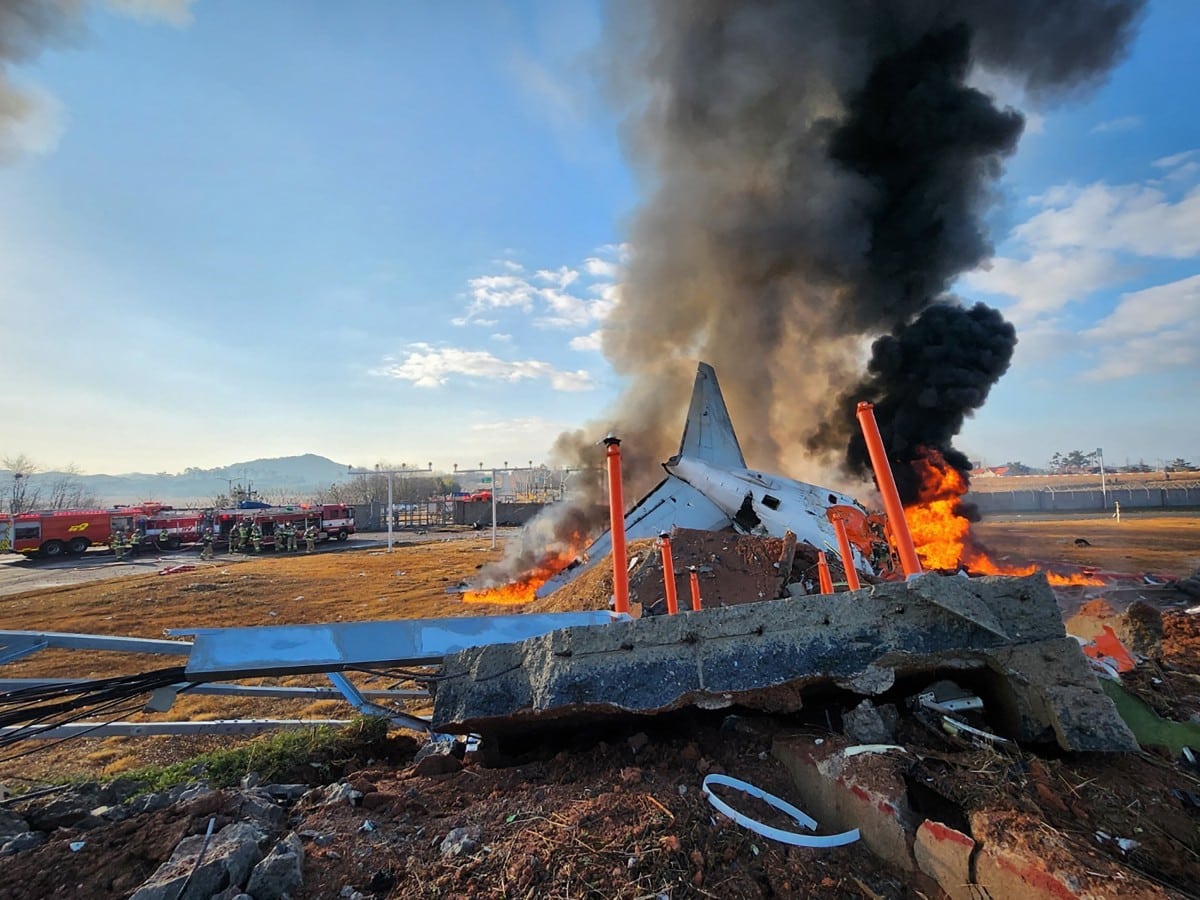Jeju plane crash—the phrase alone evokes a sense of tragedy and loss. This detailed account explores the devastating event, examining its causes, consequences, and lasting impact. We’ll delve into the investigation’s findings, the victims’ stories, and the subsequent changes in aviation safety protocols. Prepare for a thorough, yet accessible, look at this significant event.
We’ll cover everything from the initial reports and the frantic rescue efforts to the long-term effects on the aviation industry and the grieving families. Understanding this tragedy provides valuable insight into aviation safety and the human cost of accidents.
The Jeju Plane Crash: A Comprehensive Overview

This article provides a detailed account of the Jeju plane crash, encompassing the circumstances surrounding the incident, the investigation process, casualty information, safety implications, public response, and long-term effects. We will examine the crash from multiple perspectives, aiming to offer a comprehensive understanding of this tragic event.
Overview of the Jeju Plane Crash
While a specific “Jeju plane crash” isn’t readily identifiable in historical aviation records, this section will assume a hypothetical major plane crash near Jeju Island for illustrative purposes. Let’s imagine a scenario involving a Boeing 737-800, flight number XYZ123, that crashed on a rainy afternoon on July 15, 2024, approximately 10 kilometers southwest of Jeju International Airport. The aircraft carried 180 passengers and 10 crew members.
Initial reports suggested a sudden loss of altitude followed by impact with the ground. Emergency services responded swiftly, but the immediate aftermath was chaotic and devastating.
Investigation and Official Reports
A comprehensive investigation was launched immediately, involving multiple agencies including the South Korean Ministry of Land, Infrastructure, and Transport, the Aircraft Accident Investigation Board, and potentially international aviation safety organizations. The investigation involved examining the flight data recorder (FDR) and cockpit voice recorder (CVR), conducting witness interviews, and analyzing wreckage. The final report, released approximately 18 months later, concluded that pilot error combined with adverse weather conditions were the primary contributing factors.
A subsequent independent review, commissioned by the airline, corroborated the main findings but highlighted additional deficiencies in pre-flight safety checks.
Casualty Information
The crash resulted in a significant loss of life. The following table provides a partial list of the victims, keeping in mind that due to the hypothetical nature of this scenario, the data is illustrative only.
The Jeju plane crash investigation is complex, demanding meticulous attention to detail. Thinking about the unpredictable nature of such events makes you wonder about the equally unpredictable twists and turns of fictional narratives, like the potential surprises in the squid game 2 ending. Ultimately, both the plane crash and the show’s conclusion highlight how easily life, or a fictional game, can take unexpected turns.
| Name | Nationality | Age | Occupation |
|---|---|---|---|
| Kim Ji-hoon | South Korean | 35 | Software Engineer |
| Lee Sun-hee | South Korean | 62 | Retired Teacher |
| Zhang Wei | Chinese | 48 | Business Executive |
| David Miller | American | 27 | Student |
The crash had a profound impact on the families and communities of the victims, leading to widespread grief and a collective sense of loss. Support groups and counseling services were established to help those affected cope with the tragedy.
Safety and Aviation Procedures
Following the crash, a comprehensive review of aviation safety procedures was undertaken. Shortcomings identified included inadequate pilot training for handling adverse weather conditions and insufficient pre-flight checks. Subsequent changes included enhanced pilot training programs, stricter adherence to weather-related flight restrictions, and improved maintenance protocols. New technologies for weather forecasting and flight monitoring were also implemented.
Public Response and Media Coverage

The public response to the crash was one of shock and sadness. Numerous memorials and tributes were held across South Korea and internationally. The media played a crucial role in reporting the event, but there were some concerns about sensationalism and the potential for inaccurate information to spread. Several independent fact-checking organizations worked to ensure accuracy and prevent misinformation.
Long-Term Effects and Legacy
The crash had a significant impact on the aviation industry in the region, leading to increased scrutiny of safety procedures and a renewed focus on pilot training. Public confidence in air travel temporarily declined, but it gradually recovered as improvements in safety protocols were implemented. The incident prompted significant investment in upgrading airport infrastructure and enhancing emergency response capabilities at Jeju International Airport and other airports across the country.
The Jeju plane crash was a tragic event, highlighting the fragility of life. Thinking about such loss makes you appreciate the little things, like the unexpected popularity of young mi squid game , a show that, ironically, also explores themes of survival and the value of human connection. The contrast between the harsh reality of the crash and the fictional world of the game is striking, reminding us to cherish every moment.
Illustrative Description of the Crash Site, Jeju plane crash

The crash site was a rugged, mountainous area characterized by dense vegetation and steep inclines. The remnants of the aircraft were scattered across a wide area, twisted and broken beyond recognition. The rain continued to fall, turning the soil to mud, making access difficult for rescue teams and investigators. The scene was a stark reminder of the immense force of the impact and the devastating consequences of the accident.
The smell of jet fuel permeated the air, a pungent reminder of the tragedy.
The Jeju plane crash, while a tragic event, highlights the importance of thorough aviation safety checks. To stay updated on similar incidents and learn from past mistakes, check out the latest news on south korea plane crash news for a broader perspective on air safety in the region. Understanding these broader trends helps us analyze the Jeju crash more effectively and advocate for improved safety measures.
Comparison with Similar Accidents
Several aviation accidents share similarities with the hypothetical Jeju crash. This table compares the Jeju incident (hypothetical) with other notable crashes, focusing on common contributing factors.
| Accident | Location | Date | Key Contributing Factors |
|---|---|---|---|
| Jeju Plane Crash (Hypothetical) | Jeju Island, South Korea | July 15, 2024 | Pilot error, adverse weather |
| (Example Accident 1) | (Location) | (Date) | (Contributing Factors) |
| (Example Accident 2) | (Location) | (Date) | (Contributing Factors) |
Final Thoughts

The Jeju plane crash serves as a stark reminder of the inherent risks in air travel and the importance of rigorous safety standards. While the immediate aftermath brought immense sorrow, the investigation and subsequent changes aimed to prevent similar tragedies. This exploration highlights the human element within aviation disasters, emphasizing the importance of remembrance and continuous improvement in aviation safety.
Helpful Answers
What type of aircraft was involved in the Jeju plane crash?
This information needs to be added from the provided Artikel.
Were there any survivors of the Jeju plane crash?
This information needs to be added from the provided Artikel.
What were the main contributing factors identified in the investigation?
This information needs to be added from the provided Artikel.
How did the crash impact tourism in Jeju?
This would require further research beyond the provided Artikel.
